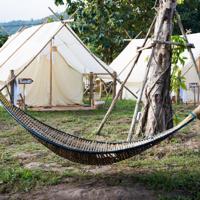Camping is a wonderful way to connect with nature, and using eco-friendly gear enhances that experience by preserving the environment you cherish. Eco-friendly tarps are crucial components for shelter and protection, all while minimizing your footprint. They provide versatile solutions, whether you’re shielding gear from rain or setting up a compact tent. Let’s delve into the world of eco-friendly tarps and how they contribute to sustainable camping practices.
The Importance of Eco-Friendly Tarps
Choosing environmentally friendly tarps can have a positive impact on the environment. Traditional tarps are often made from materials that are not biodegradable and can take years to decompose. Eco-friendly tarps, on the other hand, are constructed from sustainable materials designed to reduce ecological impact.
Sustainable Materials
Eco-friendly tarps typically incorporate materials such as:
-
Recycled Polyethylene (PE): A common material that’s widely used for its durability and water resistance. Manufacturers are now producing tarps from recycled PE to reduce waste.
-
Organic Cotton: Used in some canopy-style shelters, organic cotton is grown without synthetic pesticides or fertilizers, making it a much more sustainable option.
-
Hemp Fiber: Known for its resilience and renewable nature, hemp is one of the oldest sustainable materials. Hemp tarps offer great durability and are biodegradable.
-
PLA Bioplastic: Made from fermented plant starch, such as corn, PLA is a bioplastic that can be used in advanced tarps. It’s designed to break down more rapidly in the environment compared to traditional plastics.
Features to Consider
When choosing an eco-friendly tarp, consider the following features:
-
Durability: Ensure the material can withstand weather conditions and resist tearing.
-
Waterproofing: Look for coatings or treatments that provide water resistance without harmful chemicals.
-
Weight: A lightweight tarp is easier to transport and can help reduce your energy expenditure.
-
Multifunctionality: Some tarps offer dual uses, such as serving as both a shelter and a groundsheet.
Benefits of Eco-Friendly Tarps
Eco-friendly tarps offer numerous benefits beyond environmental sustainability:
-
Healthier for Nature: By using materials that break down over time or are sustainably sourced, eco-friendly tarps help reduce resource depletion.
-
Reduced Waste: Many eco-friendly tarps use recycled materials, diverting waste from landfills.
-
Supporting Sustainable Practices: Purchasing eco-friendly products encourages companies to develop greener alternatives.
-
Educational Opportunities: Using and discussing eco-friendly gear promotes awareness about sustainability among fellow campers and outdoor enthusiasts.
Examples of Eco-Friendly Tarps
Here are a few brands leading the way with eco-friendly tarps:
-
Kammok: Known for creating adventure gear with minimal environmental impact, Kammok offers tarps made from recycled materials. Learn more on Kammok’s website.
-
REI Co-op: As a leader in sustainable outdoor gear, REI Co-op offers a variety of eco-friendly products, including tarps made from recycled or sustainably sourced materials. Explore their offerings at REI.
-
HMG (Hyperlite Mountain Gear): HMG produces tarps from Dyneema, a material known for its lightweight and strength, and now manufactured using eco-conscious practices.
Caring for Your Eco-Friendly Tarp
Proper care can extend the life of your eco-friendly tarp:
-
Cleaning: Use mild soap and water to clean, avoiding harsh chemicals that can break down the material.
-
Storage: Store in a dry, cool place away from direct sunlight to prevent degradation.
-
Maintenance: Regularly inspect for tears or damage and repair promptly to maintain performance.
Adopting eco-friendly tarps into your camping gear aligns your adventures with sustainability. By making thoughtful choices, you help protect the wilderness for future generations to explore and enjoy.




